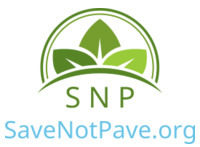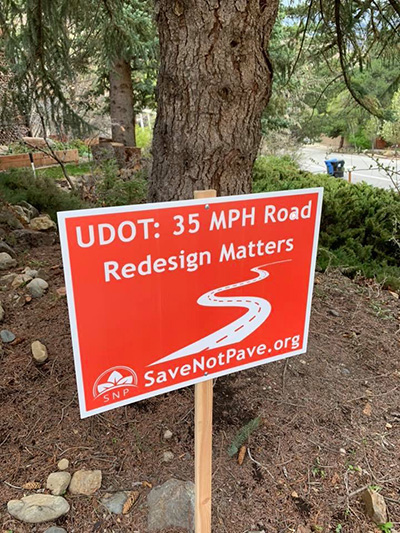Dear Governor Spencer J. Cox,
It was an inspiring speech you gave on your 1st state of the state address and I want to thank you for speaking truth when truth is needed: the foundation on which our communities are laid are cracked and must be replaced before we continue to build upon them.
2020 will be remembered for a deadly pandemic and our response to slow down: slow down commerce, slow down social interaction, slow down the spread of the disease. We are all hopeful that with everyone’s effort and commitment it will be a passing hardship, a speed bump if you will, that once overcome will be a tragic but distant memory. But a lasting and persistent crack from our social foundation continues to go much underreported.
Without fanfare or any mention within your address, 2020 recorded the worst safety record in Utah roads of the last 8 years.
2021 has started even worse.
“Zero is a number we all can live with”, a Utah Department of Transportation slogan, sounds hollow when our state’s transportation department continues to plan for the expansion and new construction of roadways with design elements that systematically place people in situations where a simple human error can cause severe injury or death.
We must reassess and evaluate what is wrong, make structural decisions such as foundational changes, and SLOW DOWN through design the likelihood of fatalities in Utah roads to bring to fruition a realistic goal of ZERO fatalities. Example: your budget just allocated 50 million dollars towards solving traffic at Little Cottonwood Canyon and a newspaper article quotes you saying that you support the Gondola option that UDOT is currently proposing. Such an option would place a large parking lot near the mouth the canyon along with what by design would be an extension of I-215 freeway-like-conditions through a residential area to allow unimpeded traffic to reach such parking lot.
A freeway, like a mighty river or a wall divides rather than connects adjacent communities. You acknowledged this fact when you stated how communities are affected when placed in such situation: “in Utah it shouldn’t matter what side of I-15 you were born on.” So you are aware of the dire consequences of building such infrastructure through communities and once a community is sliced by a fast moving roadway it is near impossible to bring healthy communities back together through the use of “band-aid” solutions such as bridges and tunnels.
In the case of Wasatch Blvd. between Big and Little Cottonwood Canyons, the community has reached out, asked, begged, and demanded that UDOT take into consideration the safety of the people that live in and around this corridor. According to a Cottonwood Heights study, about 46% of all traffic is generated by people that start or end their trips at this location rather than drive through our city.
Cottonwood Heights is the destination not a passing through element to be dissected. To these residents safe access to this road is their only option to: work, school, and life. UDOT acknowledged this fact at a Cottonwood Heights City Council Meeting on July 2nd, 2019 where their Project Director John Thomas, on behalf of Executive Director Carlos Braceras committed the organization to design a roadway designed for speeds of 35mph. At such speed cars would be delayed in reaching the parking lot by less than a minute. But, only 6 months later, by the start of 2020, the project director was replaced and with it any such promise to commit to a speed design from the proposed 50mph to 35mph.
Why?
We have been told “because that is how State roads are done everywhere.” That cannot be a good enough answer.
Underneath this statement lays the fact that UDOT has a policy that set a target of attaining an LOS (Level Of Service) of D or better 30 years in the future when no kid riding his bike a school or grandmother walking to a park is going to impede the free flow of car traffic to a parking lot so that ski resorts can flaunt a Gondola in a brochure.
Systematically such a goal mocks our state’s intent to ever attain Zero Fatalities in Utah Roads by prioritizing high-speed roadway design above pedestrian, cycling, or even local car traffic that turns in and out of at a certain location. Examples like this abound throughout the state and people’s safety is put at risk while simultaneously being told that individual responsibility is required to make up for structural and systemic deficiencies of our transportation network. This is at the heart of a foundation crack that clouds and misdirects tax dollars, human effort, and accelerates social dysfunction, increases the cost of living, and afflicts thousands of Utah families to the hardships of living under the persistent threat of unsafe conditions.
It is up to you, our governor, to set priorities and policy that collectively institute good practices that meet the safety, health, and welfare of our communities. We cannot begin to heal unless we find ourselves within a safe harbor. We cannot provide affordable housing if we do not simultaneously lower the cost of mobility, and we cannot lower the cost of mobility if we do not provide safe, convenient, and competing options to car travel.
Just like a building with deficient foundation, our society cannot grow, our air quality issues improve, our increasingly unequal society become more fair, our fatality and injury rates improve, unless your office takes on the task to systematically change the foundation on which our transportation ivory tower is built upon.
Thank you,
Eric Kraan/Cottonwood Heights resident


One Response
Readers may also be interested in: “Dangerous by design” by Ellen Birrell published in Salt Lake Tribune May 8, 2021. Tribunehttps://www.sltrib.com/opinion/commentary/2021/05/06/ellen-birrell-udots/